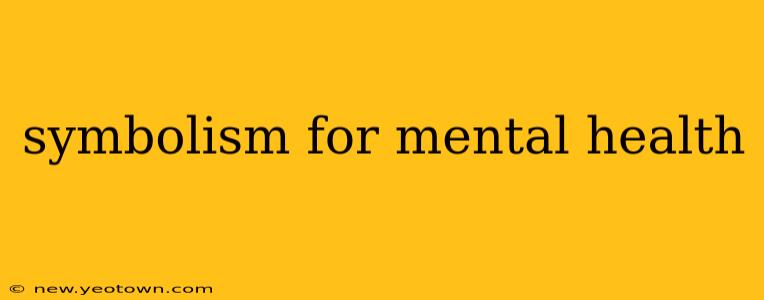Mental health, a subject often shrouded in stigma and misunderstanding, is increasingly finding expression through powerful symbolism. These symbols, far from being mere decorations, act as vital tools for communication, empathy, and advocacy. They offer a visual language that transcends the barriers of words, allowing individuals to connect with their experiences and fostering a sense of community among those who understand. This journey into the symbolism of mental health will explore the meanings behind various images and discuss their evolving roles in raising awareness and promoting understanding.
What are some common symbols used to represent mental health?
This is a frequently asked question, and the answer is multifaceted. There isn't one single universally accepted symbol, but rather a collection of images that have gained traction due to their resonance with the complexities of mental health struggles. A ribbon, often yellow, is a common sight, representing various causes, including suicide prevention and childhood mental illness. A butterfly, symbolizing transformation and hope, is another popular image. The simplicity of these symbols allows for wide interpretation and personal connection.
What does a ribbon symbolize in the context of mental health?
The ribbon, specifically the yellow ribbon, has become a widely recognized symbol of mental health awareness and suicide prevention. Its simplicity and widespread use make it easily identifiable and instantly recognizable. The yellow color is often associated with sunshine, optimism, and hope, reflecting the potential for recovery and healing. However, it's important to note that different ribbon colors can represent specific mental illnesses or causes, so context is crucial.
What does a sunflower symbolize for mental health awareness?
The sunflower, with its vibrant yellow petals and tall, sturdy stem, holds a powerful message of hope and resilience. Its bright color contrasts with the often-dark emotions associated with mental health challenges. The sunflower's ability to turn towards the sun, seeking light and positivity, beautifully mirrors the journey of recovery and the pursuit of well-being. This makes the sunflower a particularly fitting symbol of hope and perseverance in the face of adversity.
Are there any other symbols used to represent mental illness?
Beyond ribbons and sunflowers, various other images are used to represent different aspects of mental health. A broken chain, for instance, can symbolize breaking free from the constraints of mental illness. A tree with roots reaching deep into the earth can represent grounding and stability, while a phoenix rising from ashes signifies healing and rebirth. The diversity of these symbols reflects the multifaceted nature of mental health experiences.
How are these symbols used to promote mental health awareness?
These symbols serve as visual shorthand, instantly communicating complex emotions and experiences. They are used in campaigns, on merchandise, and in social media posts to raise awareness and normalize conversations around mental health. Seeing these symbols can be a comfort to those struggling, validating their experiences and reminding them that they are not alone. They also help to educate and inform the wider community, breaking down stigma and encouraging support.
What is the significance of using symbols for mental health?
The significance of using symbols for mental health lies in their ability to bypass the limitations of language. They offer a visual shorthand that transcends cultural and linguistic barriers, allowing for global connection and understanding. Moreover, symbols can foster a sense of community among those who have shared experiences. Seeing a symbol of mental health can be a comforting reminder that one is not alone in their struggles. Ultimately, these symbols are essential tools in the fight against stigma and in the promotion of mental well-being.
The journey toward better mental health is a complex one, but these symbols offer a beacon of hope and understanding, helping to illuminate the path towards healing and recovery. Their continued use and development ensure that the conversations around mental health remain open, honest, and ultimately, life-saving.

